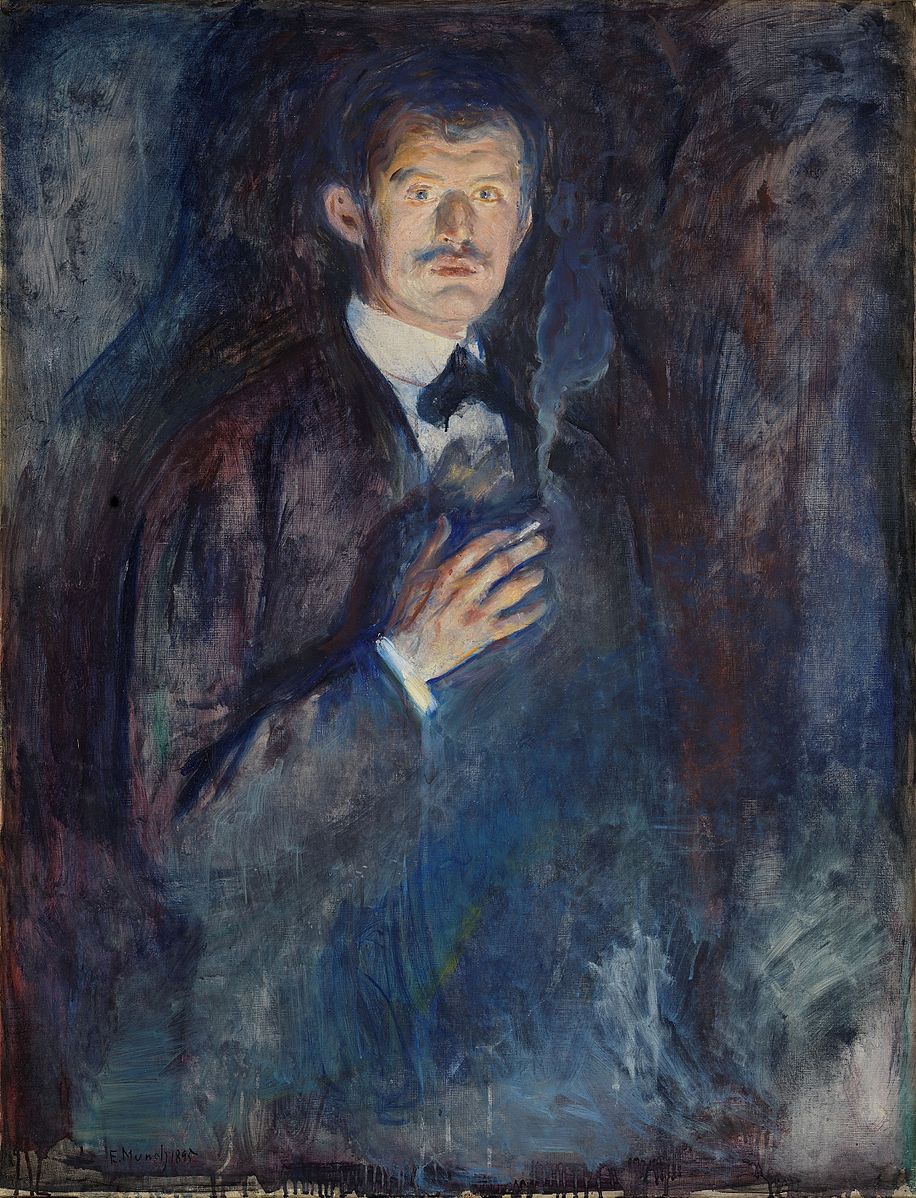When we think of Edvard Munch, we think of The Scream. Though not explicitly a self-portrait, that iconic 1893 canvas does, to anyone who’s read up on the painter’s life, look like a plausible expression of his troubled internal state. But “Self-Portrait with Cigarette made two years later, though less jarring, is just as concerned with Munch’s personal psychology and the dark underside of his identity as The Scream is.” So argues Evan Puschak, better known as the Nerdwriter, in his video essay “Edvard Munch: What A Cigarette Means.” Through the artist’s smoke of choice, it seems, we can approach and understand the different time in which he lived.
“At the end of the 19th century,” Puschak explains, “the cigarette existed at the center of a lot of different cultural forces.” In fact it hadn’t quite caught on, having yet to overcome its lower-class image compared to cigars and pipes. But as with so much that eventually goes mainstream, the cigarette was first widely adopted by bohemians.
Among them Munch and his contemporaries “found their alternative to the suffocating middle-class value system. They traded in drawing rooms for late-night cafés, dinner parties for nightclubs, and cigars for cigarettes.” Puschak pulls up a painting by Munch’s mentor Christian Krohg showing a 21-year-old Munch “lighting up with his friends and fellow painters in his studio.”
Even as he inhabited it, Munch himself also captured this floating world in his art. In one of his etchings, “smoke snakes and fills up the atmosphere of a café, where bohemian intellectuals of both genders drink and debate art and ideas.” To the social reformers of late 19th-century Norway such scenes were anathema, and “the cigarette was symptomatic of society’s degeneration.” These figures thought little more of Munch’s art, whether the work in question was a relatively naturalistic image like Self-Portrait with Cigarette or a violently expressionist one like The Scream. Regarded today as examples of high, refined culture, his paintings have in some sense lost their edge; but then so has the cigarette, a onetime liberating symbol of social and artistic revolution now reduced to a squalid public-health hazard.

Related Content:
Explore 7,600 Works of Art by Edvard Munch: They’re Now Digitized and Free Online
The Life & Work of Edvard Munch, Explored by Patti Smith and Charlotte Gainsbourg
Edvard Munch’s Famous Painting The Scream Animated to the Sound of Pink Floyd’s Primal Music
30,000 Works of Art by Edvard Munch & Other Artists Put Online by Norway’s National Museum of Art
Based in Seoul, Colin Marshall writes and broadcasts on cities, language, and culture. His projects include the Substack newsletter Books on Cities, the book The Stateless City: a Walk through 21st-Century Los Angeles and the video series The City in Cinema. Follow him on Twitter at @colinmarshall or on Facebook.


Leave a Reply